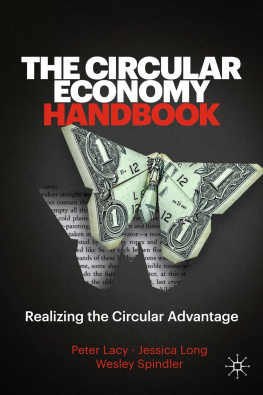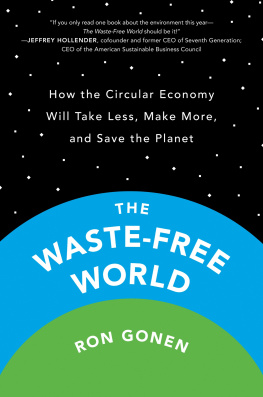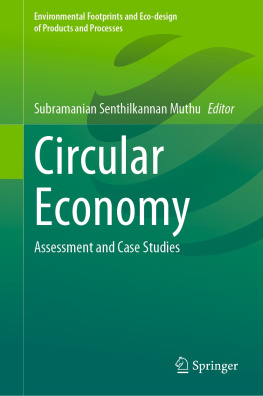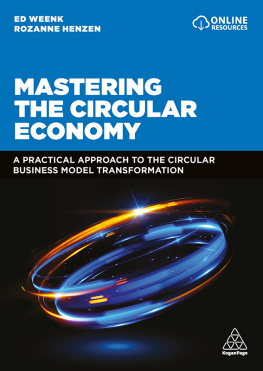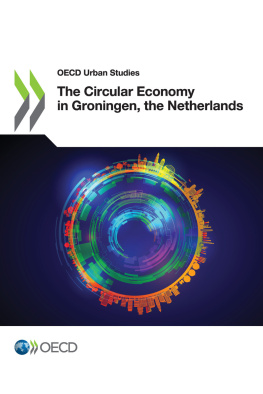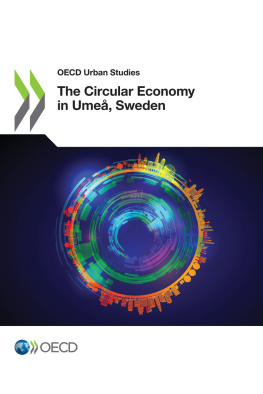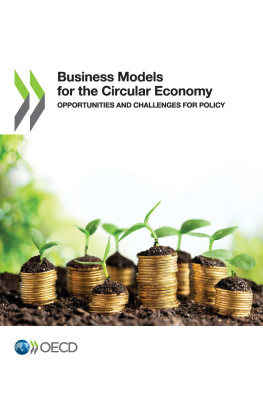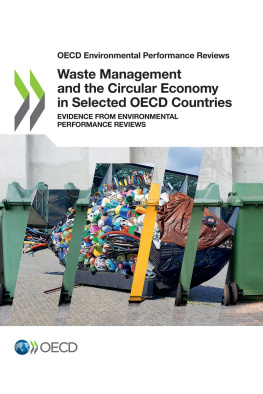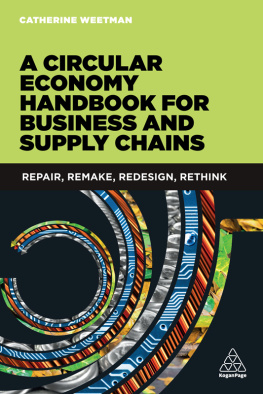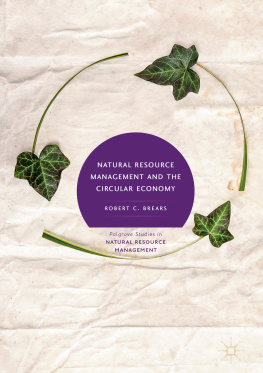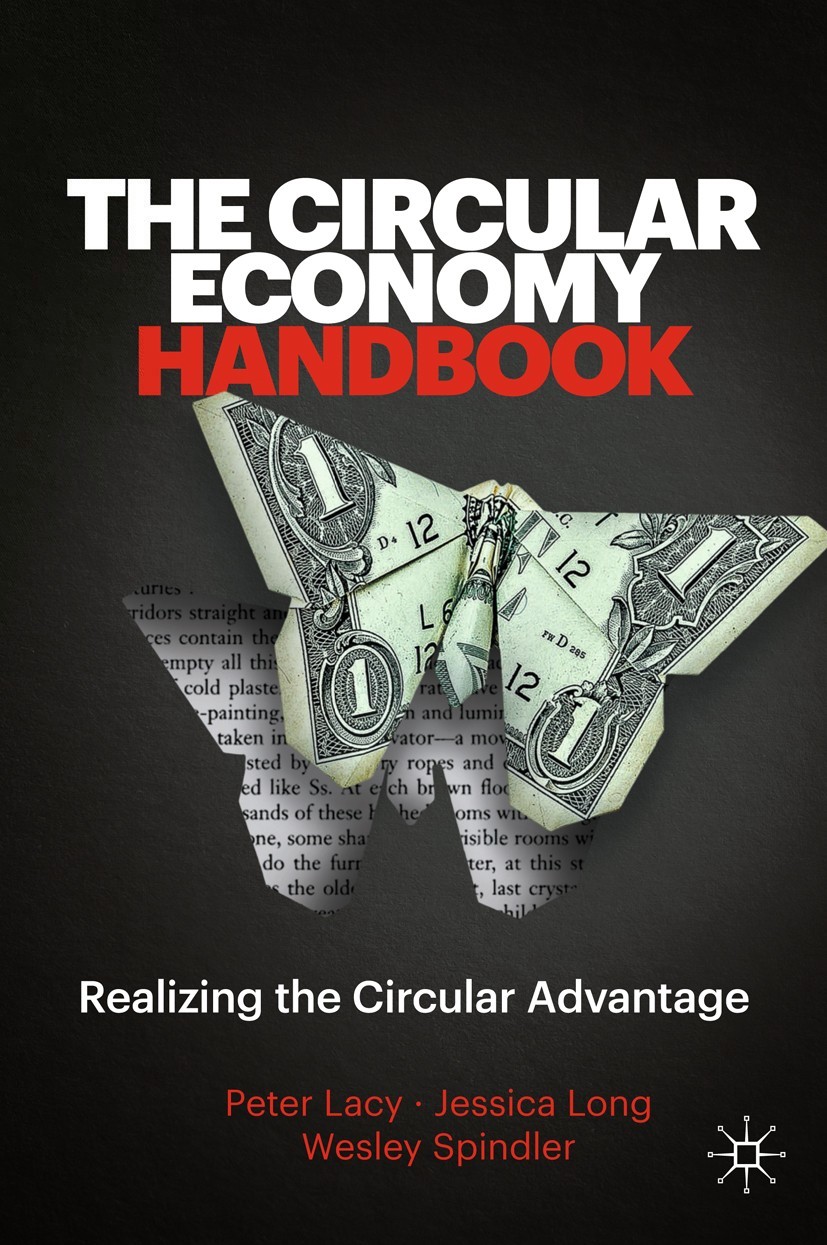Peter Lacy , Jessica Long and Wesley Spindler
The Circular Economy Handbook
Realizing the Circular Advantage
Peter Lacy
Accenture, London, UK
Jessica Long
Accenture, Washington, D.C., USA
Wesley Spindler
Accenture, London, UK
ISBN 978-1-349-95967-9 e-ISBN 978-1-349-95968-6
https://doi.org/10.1057/978-1-349-95968-6
The author(s) has/have asserted their right(s) to be identified as the author(s) of this work in accordance with the Copyright, Designs and Patents Act 1988.
The Editor(s) (if applicable) and The Author(s), under exclusive license to Springer Nature Limited 2020
This work is subject to copyright. All rights are solely and exclusively licensed by the Publisher, whether the whole or part of the material is concerned, specifically the rights of translation, reprinting, reuse of illustrations, recitation, broadcasting, reproduction on microfilms or in any other physical way, and transmission or information storage and retrieval, electronic adaptation, computer software, or by similar or dissimilar methodology now known or hereafter developed.
The use of general descriptive names, registered names, trademarks, service marks, etc. in this publication does not imply, even in the absence of a specific statement, that such names are exempt from the relevant protective laws and regulations and therefore free for general use.
The publisher, the authors and the editors are safe to assume that the advice and information in this book are believed to be true and accurate at the date of publication. Neither the publisher nor the authors or the editors give a warranty, expressed or implied, with respect to the material contained herein or for any errors or omissions that may have been made. The publisher remains neutral with regard to jurisdictional claims in published maps and institutional affiliations.
Cover credit: Accenture Strategy
This Palgrave Macmillan imprint is published by the registered company Springer Nature Limited
The registered company address is: The Campus, 4 Crinan Street, London, N1 9XW, United Kingdom
To the World Economic Forum, Forum of Young Global Leaders, and members of the Platform for Accelerating the Circular Economy (PACE), in recognition of their support and work in progressing the transformation to a more circular economy.
To all the pioneering changemakers, organizations, and partners, who have been a constant inspiration to usdemonstrating what it means to be responsible leaders as we pave a new path forward.
And to our families, especiallyLucy, Jack, Sam, Gay, Jenny, Bethan, Aida, Felicity, Isabel, Sophie, Lincoln, Archie, Chris and Trishwithout them, we surely would not be the individuals we are today, striving to make our small contribution to a brighter future for all.
Foreword by Frans van Houten
We must standardize and scale up the circular economy to achieve a global leap in prosperity.
The daily toll of environmental harm being inflicted on our population and planet is a heavy burden. In the simplest terms, it is the most important issue of our times. How we systematically reverse the tide of wastefulness and reduce carbon emissions must be at the forefront of our collective thinking as individuals, organizations, and institutions. For my part, I am convinced the circular transformation is a sustainable path in decoupling economic development from unsustainable resource consumption.
Six years ago, Philips made a strategic decision to embed circular thinking throughout our business, as a competitive necessity, and with the conviction that companies solving the problem of resource constraints will gain an advantage. The misconception is that circularity adds costs. My experience is that circular innovation unlocks new value by increasing customer preference and generating superior margins. Moreover, by ingraining green thinking with a strong sense of purpose and a commitment to meaningful innovation, the culture and attractiveness of Philips as an employer and partner have benefitted immeasurably.
In many respects, the fundamental challenge remains. How do we embed circularity ineverythingwe do, while also bringing employees, customers and suppliers with us on this vital transformation? We set firm goals and ambitious targets designed to stretch the boundaries of what we can achieve. It is our objective to close-the-loop on all large medical equipment by 2020. We will extend this to all medical equipment by 2025 and embed this approach throughout our consumer businesses.
Considering progress and next steps, Philips is driven by the necessary passion, expertise, and innovation capabilities to unlock latent circular value. Often, it demands intensive efforts and commitments on behalf of our employees and partners to meet the standards we set ourselves. Circular ecosystems and business models must be an integral part of our DNA. By embracing lean and continuous improvement, our priority now is tooptimize, standardize and scale-upcircularity throughout all aspects of the global supply chain.
I see a similar evolution in other companiesat large corporations and small and medium-sized enterprises (SMEs)in both the public and private sectors, and across key initiatives in e-waste, plastics and capital equipment. We can be proud of our achievements. Yet the urgency of the challenge demands that we go faster, execute more effectively, and stretch targets even further. How we act as a global coalition of leaders to scale up, measure impact and set new standards is what will drive universal change.
I congratulate the authors of this handbook on delivering practical guidelines, clear strategies and instructive case studies to galvanize and grow the circular economy. The tipping point at which we will inflict irreversible damage on future generations is fast approaching. It is the responsibility of business leaders, at all levels, to translate this shared wisdom into an all-pervading and operationally effective circular economy.
Frans van Houten CEO & Chairman, Philips; Co-Chair, Platform for Accelerating the Circular Economy (PACE)
Amsterdam, Netherlands
Foreword by David Rosenberg
Our house is on fire. Famed Swedish climate activist Greta Thunberg said this in Davos in 2019, and her vivid picture is not an overstatement. We need to act with urgency to change the course of our planets trajectory. Commercial leaders must step up and drive impact.
The Circular Economy Handbookis an essential guide for companies who are striving to do the right thing for the planet, investors, and all stakeholders by embracing circular economy principles. In an area where issues can be complex and the trade-offs seemingly prohibitive, the good news is that there are examples of successful circular economy businesses. This book lays out different forms of success with case studies that explain inspirational, easily embraced business models. It is one thing to want to do the right thing; knowing how to do it is the critical part.
This book provides a much-needed blueprint on how a business can start a circular economy journey. What are the right questions to ask? What are the right problems to solve? What should be your long-term goals as well as shorter-term milestones? Where to prioritize? This handbook addresses these questions, showing how to get started and succeed.

